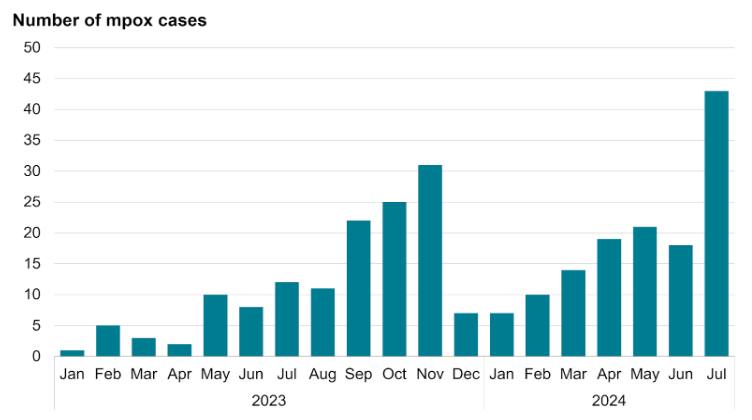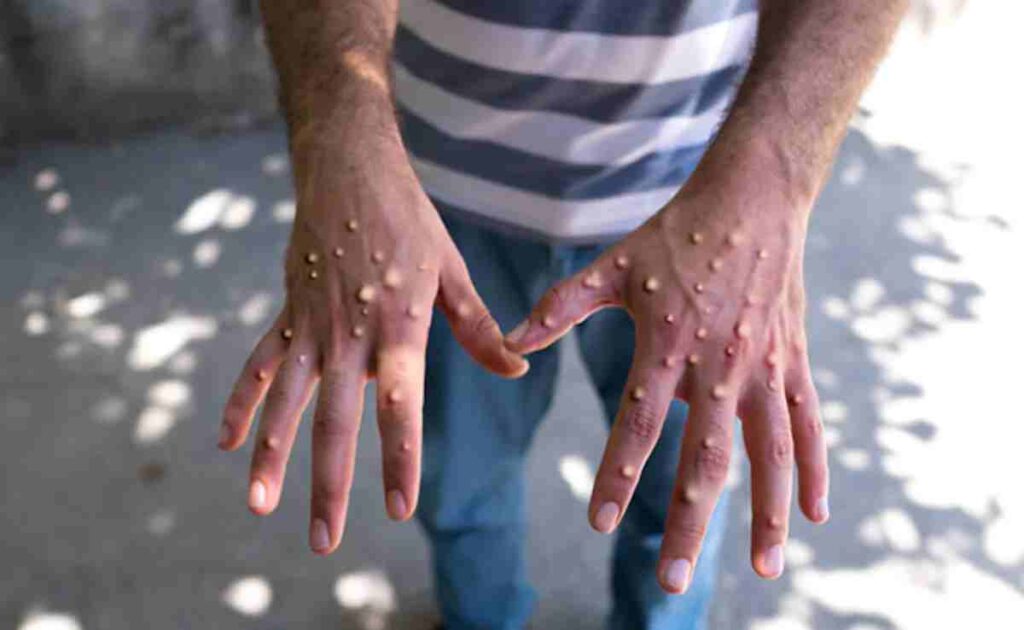Introduction
As the world continues to grapple with emerging infectious diseases, Mpox (previously known as monkeypox) has re-emerged as a significant public health concern. Initially confined to specific regions in Central and West Africa, Mpox has recently made headlines with outbreaks in countries far beyond its traditional boundaries. The rise in global Mpox cases has prompted urgent discussions among health experts, policymakers, and the general public about the virus’s spread, the effectiveness of containment strategies, and the lessons learned from past health crises.
In this article, we delve into the complexities of Mpox, exploring its origins, the reasons behind its recent spread, and the measures being taken to curb its impact. By examining the latest global developments, we aim to provide a comprehensive overview of this emerging public health challenge, highlighting the critical need for vigilance, education, and coordinated international response efforts.
Understanding Mpox
The disease Mpox (formerly monkeypox) is caused by the monkeypox virus (commonly abbreviated as MPXV), an enveloped double-stranded DNA virus of the Orthopoxvirus genus in the Poxviridae family, which includes variola, cowpox, vaccinia, and other viruses. The two genetic clades of the virus are clades I and II. The current outbreak has been triggered by Clade 1, believed to be a more serious variant of the Mpox virus than has appeared before and which can spread through skin-to-skin contact.
The monkeypox virus was discovered in Denmark (1958) in monkeys kept for research and the first reported human case of Mpox was a nine-month-old boy in the Democratic Republic of the Congo (DRC, 1970). Mpox can spread from person to person or occasionally from animals to people. Following the eradication of smallpox in 1980 and the end of smallpox vaccination worldwide, mpox steadily emerged in central, east, and west Africa. A global outbreak occurred in 2022–2023. The natural reservoir of the virus is unknown – various small mammals such as squirrels and monkeys are susceptible.
The World Health Organisation (WHO) has declared the monkeypox outbreak a public health emergency of international concern, necessitating heightened awareness, rapid identification, and rigorous infection control measures to prevent further spread.
Signs and Symptoms
Mpox causes signs and symptoms which usually begin within a week but can start 1–21 days after exposure. Symptoms typically last 2–4 weeks but may last longer in someone with a weakened immune system. Common symptoms of Mpox are rash, fever, sore throat, headache, muscle aches, back pain, low energy, and swollen lymph nodes.
The rash begins as a flat sore which develops into a blister filled with liquid and may be itchy or painful. As the rash heals, the lesions dry up, crust over, and fall off. Children, pregnant people, and people with weak immune systems are at risk for complications from Mpox.
Typically for mpox, fever, muscle aches, and sore throat appear first. The Mpox rash begins on the face and spreads over the body, extending to the palms of the hands and soles of the feet, and evolves over 2-4 weeks in stages – macules, papules, vesicles, pustules. Lesions dip in the center before crusting over. Scabs then fall off. Lymphadenopathy (swollen lymph nodes) is a classic feature of mpox. Some people can be infected without developing any symptoms.
In the context of the global outbreak of Mpox which began in 2022 (caused mostly by the Clade IIb virus), the illness begins differently in some people. In just over half of cases, a rash may appear before or at the same time as other symptoms and does not always progress over the body. The first lesion can be in the groin, anus, or in or around the mouth.
People with Mpox can become very sick. For example, the skin can become infected with bacteria leading to abscesses or serious skin damage. Other complications include pneumonia, corneal infection with loss of vision; pain or difficulty swallowing, vomiting and diarrhea-causing severe dehydration or malnutrition; sepsis (infection of the blood with a widespread inflammatory response in the body), inflammation of the brain (encephalitis), heart (myocarditis), rectum (proctitis), genital organs (balanitis) or urinary passages (urethritis), or death.
Outbreak
The World Health Organization (WHO) declared the virus a “public health emergency of international concern” while emphasizing that Mpox is “not the new COVID“.
This is the second emergency alert relating to Mpox from the global health agency in two years.
The Democratic Republic of the Congo accounts for 95% (17 794) of the reported cases and 99% (535) of the deaths from Mpox in 2024, The DRC is currently experiencing its worst Mpox outbreak, with a 160% increase in cases and a 19% rise in deaths compared to last year.
making it the main focus of the response.
The PHEIC and PHECS declarations, along with the confirmation of the first mpox case with clade 1b outside Africa in Sweden and Pakistan have raised alert levels globally. In making the declaration, WHO’s expert advisory committee called for a coordinated international response to prevent further spread and save lives.
Monkeypox has become a global threat right now. The disease which was limited to Congo earlier has now become a major health crisis in several countries worldwide. Countries like Pakistan, and the Philippines have already recorded monkeypox cases this year.

Treatment and Vaccination
Many years of research on therapeutics for smallpox have led to the development of products that may also be useful for treating Mpox. For example, an antiviral developed to treat smallpox (tecovirimat) was approved in January 2022 by the European Medicines Agency for the treatment of Mpox under exceptional circumstances. Experience with these therapeutics in the context of an outbreak of Mpox is growing but still limited. For this reason, their use is usually accompanied by enrolment in a clinical trial or expanded access protocol accompanied by the collection of information that will improve knowledge on how best to use them in the future
There are vaccines recommended by WHO for use against Mpox. Many years of research have led to the development of newer and safer vaccines for an eradicated disease called smallpox. Some of these vaccines have been approved in various countries for use against Mpox.
At present, WHO recommends the use of MVA-BN or LC16 vaccines, or the ACAM2000 vaccine when the others are not available.
Self-care and prevention
Take these steps to prevent infection with or the spread of the Mpox virus:
- Avoid close contact with people who have a rash that looks like Mpox.
- Avoid handling clothes, sheets, blankets, or other materials that have been in contact with an infected animal or person.
- Isolate people who have Mpox from healthy people.
- Wash your hands well with soap and water after any contact with an infected person or animal. If soap and water aren’t available, use an alcohol-based hand sanitizer.
- Avoid animals that may carry the virus.
Conclusion
The recent MPox outbreak has highlighted the need for vigilant public health monitoring and rapid response mechanisms to prevent the spread of infectious diseases. While efforts to control the outbreak have been largely successful, with vaccines and public health interventions playing a crucial role, it is imperative to remain cautious. The outbreak underscores the importance of global collaboration in disease surveillance and the need for continuous research to better understand emerging pathogens.
Moving forward, strengthening healthcare infrastructure, especially in vulnerable regions, and ensuring equitable access to vaccines and treatments will be vital in preventing future outbreaks. Public education and awareness campaigns can also help mitigate the spread of misinformation and encourage responsible health practices. As we reflect on the lessons learned, it is clear that a proactive and unified approach is essential in safeguarding public health and preventing future crises.
-BHAWNA SINGH
Must Read: PRE-APPROVED SICKNESS? THE HEATED DEBATE ON INDIA’S SICK LEAVE REGULATION

